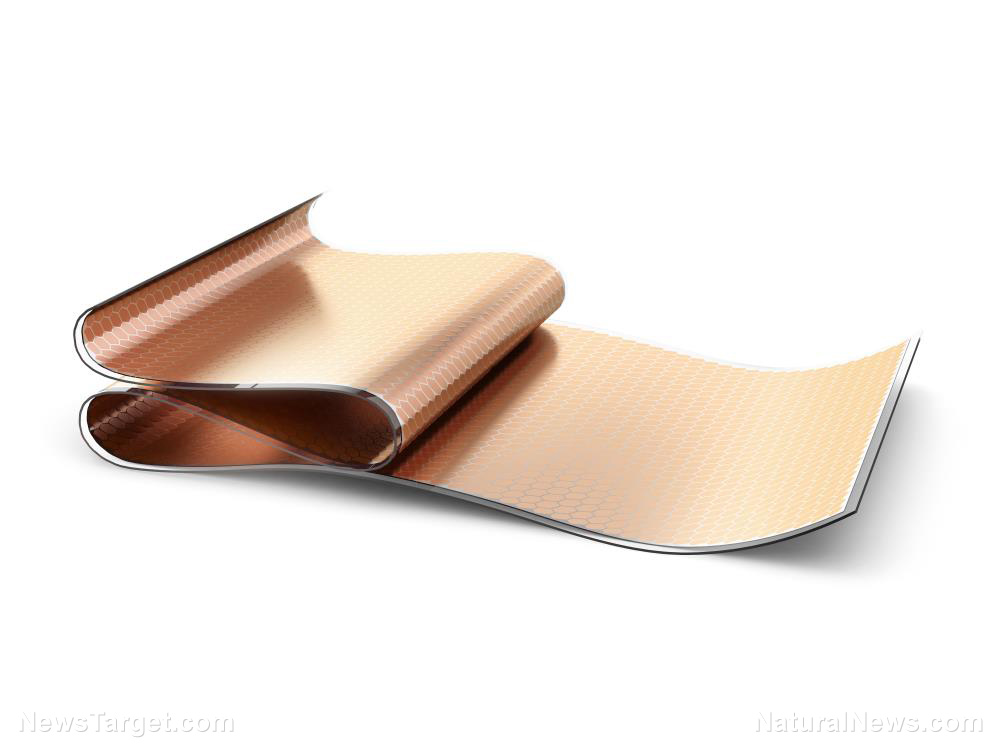Fancy new fabric reacts to body heat, automatically cools or insulates to keep you comfortable
08/19/2019 / By Edsel Cook

People could keep their jumper dresses or sweaters on even when the weather got warmer – if their clothing used a newly developed self-cooling textile. A combination of ordinary wool and metal conductor, the fabric retains heat during cold times and vents that stored heat when the weather starts warming up.
The material detects the temperature of its surroundings and adjusts its insulation and radiation properties to keep the wearer comfortable. It accomplishes these changes without prompting from the user and does not need electricity.
Researchers from the University of Maryland (UMD) developed the smart fabric by coating wool with a thin layer of conducting metal. Wool is extensively used in breathable sportswear and the additional layer doesn’t interfere with the passage of air through the textile.
Commercially available breathable sportswear can only change the body temperature of the user by five percent at best. In comparison, the new textile increased or decreased temperatures by up to 35 percent. It also didn’t need special treatment in the laundry. Finally, the additional material and manufacturing process only increased the cost of the clothing by a few dollars. (Related: The raw material for various natural textiles shown to have potent antioxidant properties.)
Clothing made from carbon nanotube-coated wool automatically adjusts the temperature
“This material was created with the idea of making sure that someone can remain comfortable,” explained UMD researcher Min Ouyang. “They do not have to take off clothing, then put on clothing, to try to reach a comfortable temperature.”
Ouyang and his team developed the smart material to save time and energy for people who need to don insulating clothes for long periods but occasionally find the need to shed those clothes. Using existing wool as the base material, they applied a layer of carbon nanotubes, incredibly thin yet durable “supermaterials” that are cheaper and easier to produce.
The thinness of the metal coating allowed the wool to detect the body temperature of the wearer. It kept track of the moisture levels of the skin, which rise as a person starts to sweat from increasing heat.
In response to the rising temperatures, the smart fabric decreased the size of its fibers. Furthermore, the shrunken strands drew closer together. The combination of reduced size and increased compactness produced an electric charge that helped the body cool off by getting rid of heat.
Once temperatures got colder and the wearer stopped sweating, the fabric reversed its contraction. The carbon nanotube coating gathered heat from the air, which kept the user warm.
This smart fabric cools you down when it’s hot and keeps you warm in the cold
The UMD smart fabric improved upon earlier attempts at self-cooling clothes. For example, Japanese researchers developed jackets with built-in air conditioning in the form of a pair of small fans in the back of the clothing.
The carbon nanotube-coated wool did not need any power to work. Instead, it took advantage of the laws of physics by leveraging the natural heat-radiating abilities of the body. The smart textile also responded to changes in body temperature with such speed that the wearer would barely notice the changes in the surrounding temperature.
“For all of history, the only way to regulate the radiator has been to take clothes off or put clothes on,” Youang explained. “But this fabric is a true bidirectional regulator.”
In their initial trials, he and his team manufactured a sheet of self-cooling fabric that measured five square feet. They provided samples of their material to a U.S. clothing company for further testing. The smart textile is expected to become commercially available within two years.
Sources include:
Tagged Under: apparel, breakthrough, carbon nanotubes, clothes, clothing, discoveries, future science, goodtech, science and technology, smart clothing, smart fabrics, synthetic clothing, textiles
RECENT NEWS & ARTICLES
COPYRIGHT © 2017 FUTURE SCIENCE NEWS


















